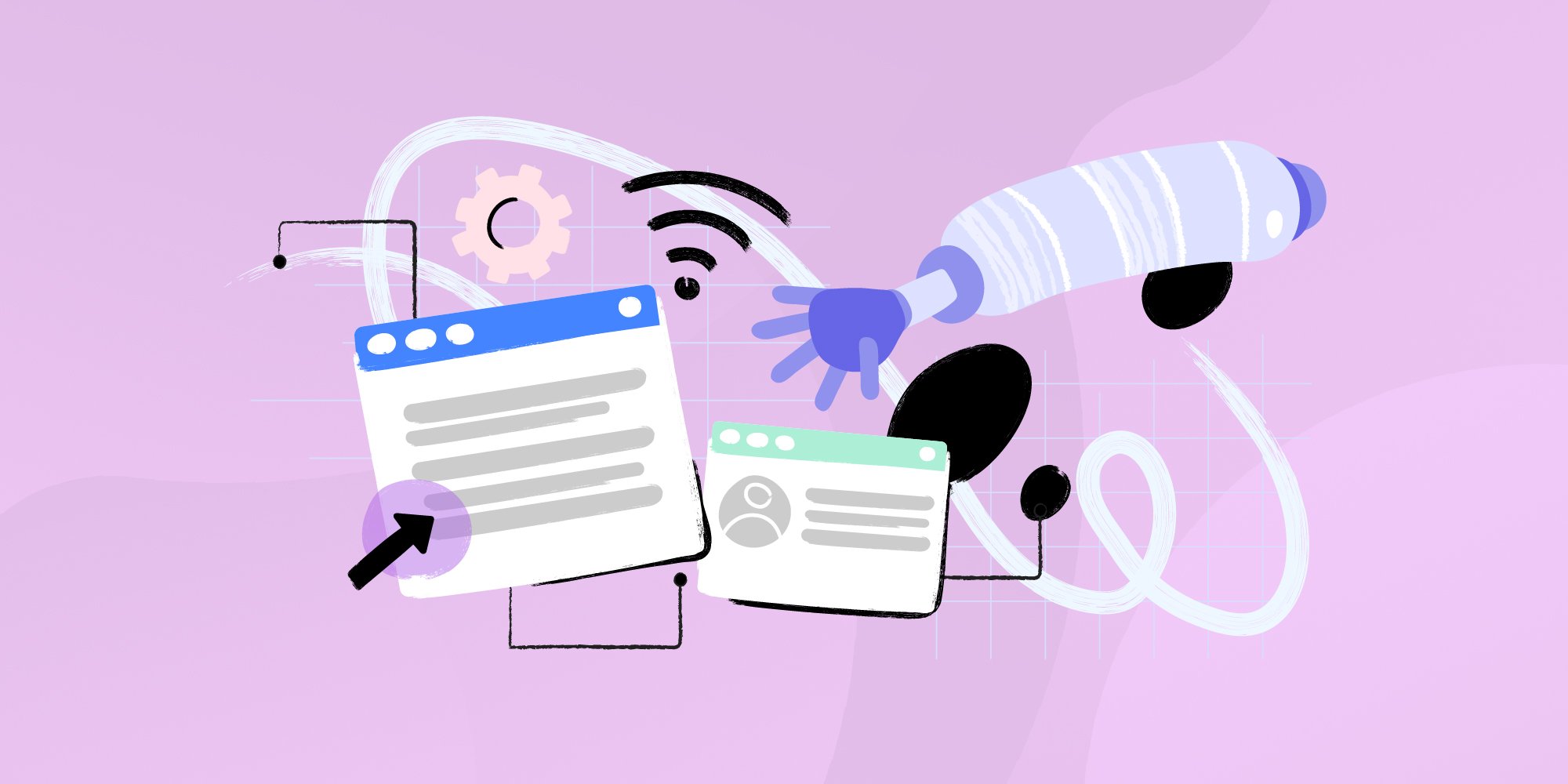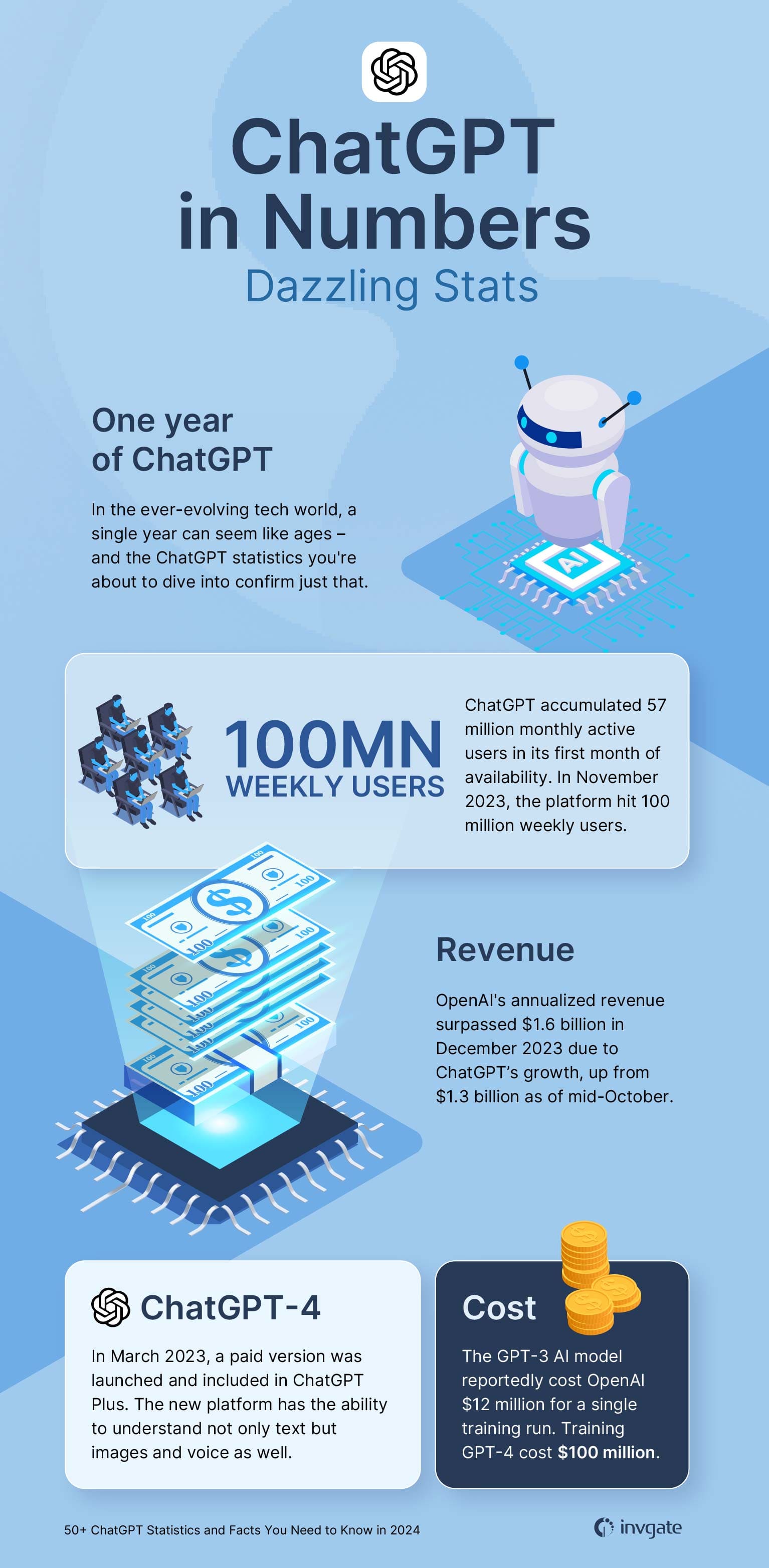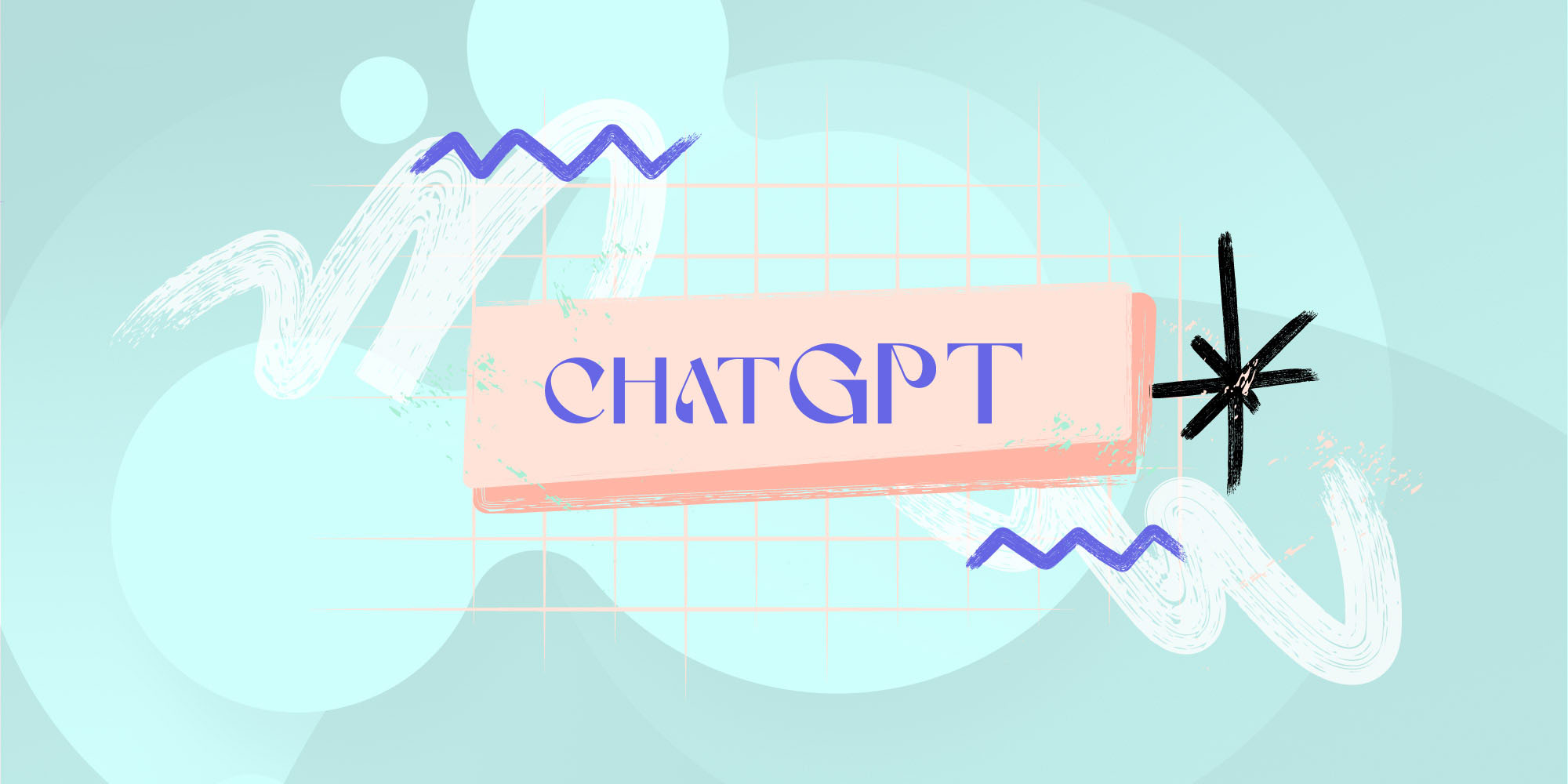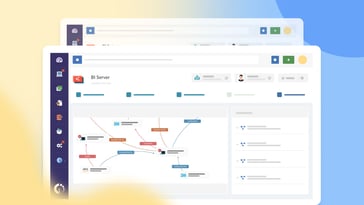In the ever-evolving tech world we live in, a single year can seem like ages – and the ChatGPT statistics you’re about to dive into confirm just that. OpenAI’s beloved chatbot, born in November 2022, has shown that its initial launch was just the starting point for something even bigger, and it’s showing no signs of slowing down.
Over the last months, ChatGPT has broken several records. For instance, five days after its release, the chatbot crossed the million-user mark, and within two months, it skyrocketed to 100 million active users, securing its position as the second fastest-growing consumer app in history.
And there is more: in less than a year, the platform hit 100 million weekly users, with this figure continuing to climb. The latest ChatGPT statistics reveal impressive growth, user familiarity, and session statistics, providing insights into its performance and impact. ChatGPT's social media traffic has also been significant, with substantial engagement from platforms like YouTube, X (formerly Twitter), LinkedIn, and Facebook.
Delving into the core of its capabilities, ChatGPT leverages advanced deep learning techniques to produce human-like text, images, and music; and deliver accurate responses across an extensive array of inquiries. Its versatility spans from code generation to meme creation, it can even transform into your own customized IT support bot, making it a valuable tool not only for customer service but also for IT enthusiasts. Users can access ChatGPT via web browsers, and it is available in different countries, although some users face issues in certain regions.
What makes ChatGPT stand out? In this article, we’ll delve into crucial ChatGPT statistics and facts that mark the significant leaps Artificial Intelligence (AI) has taken. Join us on this journey to uncover the remarkable evolution of ChatGPT and the broader landscape of artificial intelligence.
Let’s get into it!

What is ChatGPT?
Before diving into ChatGPT statistics, we need to define it. ChatGPT is an advanced artificial intelligence chatbot developed by OpenAI that can engage in natural language conversations, answer questions, and complete a wide variety of language-based tasks.
In a nutshell, the chatbot understands what users say, figures out what they need, and gives accurate responses with advanced data analysis capabilities.
Among other functionalities, it can share information on different topics, translate languages, or create content based on text, voice or image prompts – all this while interacting conversationally, so users can feel like they are talking to a natural person.

60+ ChatGPT facts you need to know
With the rising popularity of ChatGPT, we began to wonder about the numbers behind such a massive phenomenon to help understand where the chatbot is standing today, and where it’s heading towards. We also looked into how many ChatGPT users there are, including weekly and monthly figures, as well as the total number of users globally and the initial number of users at launch.
So, we started digging, and put together the most important ChatGPT statistics and milestones of the platform, including an analysis of ChatGPT traffic, such as direct visits, organic search, referrals, social media, and the most common prompts used by AIPRM subscribers interacting with ChatGPT.
ChatGPT's traffic has seen significant growth, with monthly visits reaching millions, user growth steadily increasing, and fluctuations in website traffic influenced by various factors. The sources of traffic include direct visits and high user engagement.
To make the reading easier, we divided the +60 statistics into the following categories:
- ChatGPT history
- ChatGPT general facts
- ChatGPT free vs. paid version
- ChatGPT limitations
- ChatGPT in a year of malicious use
- ChatGPT regulations and legal issues
- ChatGPT costs
- OpenAI background and investments
- ChatGPT users
- ChatGPT alternatives
ChatGPT history
The journey of ChatGPT began with the development of Generative Pre-Trained Transformers (GPT) by OpenAI. Starting with GPT-1 in 2018, the technology evolved through GPT-2 and GPT-3, each bringing significant advancements in language processing and text generation. ChatGPT, based on GPT-3, was launched in November 2022 and quickly gained one million users in less than a week. The release of GPT-4 in 2023 further enhanced its capabilities, solidifying ChatGPT's position as a leading AI tool.
- OpenAI released the first version of the Generative Pre-Train Transformer (GPT) artificial intelligence language model in June 2018. OpenAI, which owns ChatGPT, was started as a non-profit in 2015 by Sam Altman, Elon Musk, Ilya Sutskever, Greg Brockman, and others, and is backed by Microsoft and led by Sam Altman.
- GPT-1 and GPT-2 laid the foundations for GPT-3.
- GPT-1 was trained with BookCorpus, a large-scale dataset of more than 11,000 unpublished books designed for training and evaluating machine learning models whose primary focus was language understanding.
- On Valentine’s Day 2019, GPT-2 was launched with the slogan “too dangerous to release.”
- GPT-2 was trained with 40 billion tokens of text extracted from more than 8 million web pages linked in Reddit articles with over 3 upvotes.
- Later, GPT-2 was used to generate musical compositions emulating more than 10 instruments with MuseNet and a generative music tool that includes lyrics and can imitate human voices with JukeBox.
- In June 2020, GPT-3 was released, trained with over 175 billion parameters, the first generative artificial intelligence with the ability to comprehend and write human-like texts.
- Some of the applications that were developed based on GPT-3 are:
- ChatGPT: launched in November 2020, it is a chatbot, article writer, and code writer.
- DALL-E: first appearing in January 2021, it creates images from text.
- Whisper: released in September 2022, it performs as a multilingual voice-to-text.
ChatGPT general facts
ChatGPT is more than just a chatbot; it's a powerful AI tool capable of generating human-like text, images, and music. It supports various applications, including customer service, content creation, and programming assistance. ChatGPT's web traffic reveals over 10 million daily queries, demonstrating its widespread adoption and impact. With both free and paid versions available, ChatGPT caters to diverse user needs, making it a key player in the AI landscape.
- ChatGPT 4o, also known as GPT-4o, is an updated version of the underlying large language model technology that powers ChatGPT. It was released in May 2024 and is touted as a "natively multimodal" model that can reason across audio, vision, and text in real time. This new version is significantly faster than its predecessors, with response times as low as 232 milliseconds for audio inputs, which is comparable to human response times in conversations.
- ChatGPT receives more than 10 million queries per day and, in November 2023, hit 100 million weekly users.
- The chatbot was trained on a massive corpus of text data, around 570GB of datasets, including web pages, books, and other sources.
- GPT-3 has been fine-tuned for a variety of language tasks, such as translation, summarization, and question-answering. Even service desk software can leverage AI capabilities to process requests and enhance the quality of responses.
 Recommended reading
Recommended reading9 Ideas to Use ChatGPT for IT Support
- It can create human-like text, including poems, code, and award-winning novels. The ChatGPT app has seen significant statistics in terms of downloads, market popularity, and user demographics, highlighting its widespread use and impact.
- ChatGPT has been integrated into a variety of platforms and applications, including websites, messaging apps, virtual assistants, and other AI applications.
- Experts have called GPT-3 a major step in developing artificial intelligence.
- GPT-3 has been praised for its ability to understand the context and produce relevant responses.
- GPT-3 has also been criticized for its lack of common sense knowledge and susceptibility to producing biased or misleading responses.
- OpenAI has made GPT-3 available through an API, allowing developers to create their own AI applications. In fact, tools like Microsoft Teams and InvGate Service Management have integrated GPT-based AI responses to empower support efficiency.
- Last year, GPT-3 upgraded to GPT-3.5. One of their main differences relies on its parameters (GPT-3.5 has only 1.3 billion) and the fact that the upgrade is designed to work within policies based on human values, aiming to make AI systems more natural and safe to interact with.
- ChatGPT-3.5 is the latest open and free version for the chatbot, but OpenAI launched ChatGPT-4 in March 2023, a paid version included in ChatGPT Plus with significant features and functionalities for users and organizations.
- In July 25, 2024, OpenAi announces the beta test release of Search GPT. A prototype of search engine with the capabilities of Chatgpt.
ChatGPT free vs. paid version
ChatGPT offers both a free version and a paid subscription known as ChatGPT Plus. The free version provides unlimited access to basic functionalities, while the paid version, costing $20 per month, includes additional features like DALL-E, Browsing, and Advanced Data Analysis. Paid users also enjoy priority access and enhanced privacy, making ChatGPT suitable for both individual and enterprise use.
- ChatGPT free includes unlimited messages, interactions, and history. ChatGPT Plus costs $20 per user billed monthly and adds access to additional tools like DALL·E, Browsing, Advanced Data Analysis, and more.
- ChatGPT also provides a paid subscription called Team and Enterprise, both including the possibility to create and share GPTs with your workspace, enhanced privacy, and priority support, among other features.
- One of the main differences between GPT-3.5 and GPT-4 is that the latter is multimodal, meaning it has the ability to understand not only text but images and voice as well.
- The paid version of ChatGPT also offers the possibility of using third-party plugins for specific needs. Some of them are Expedia for travel inquiries, Instacart for grocery shopping, or Slack to connect your workspace.
- With GPT-4, users can also create customized chatbots called GPTs for specific purposes like marathon training, creative writing, trip planning, or even building a Tech Support advisor.
- Users have already created more than 3 million customized GPTs, so in January 2024, OpenAI launched the GPT store, centralizing the chatbots for paid users to download.
- OpenAI halted ChatGPT Plus sign-ups in November 2023 due to excessive demand surpassing GPT capacity and reopened subscriptions in December.
- As for differences in performance, while GPT-3.5 managed to surpass only 10% of the humans trying to pass the United States' bar exam for lawyers, GPT-4 beated 90% of them.
- Chat GPT-4 is capable of handling over 25,000 words of text. The free version, in contrast, can only deliver 16,384 via the OpenAI API.
- All users can access Bing, Microsoft Edge's browser, which runs its search engine on a customized GPT-4 technology for searches.
- For paid users, it is possible to access the internet through ChatGPT using the Bing selector, something that isn't possible with GPT-3.5.

ChatGPT limitations and advanced data analysis capabilities
- Despite ChatGPT improvements on this topic, OpenAI admits the chatbot still generates biased or inaccurate responses, particularly when the model has not been fine-tuned on specific domains or tasks. Identifying ChatGPT written content remains a challenge, with statistics showing that a significant percentage of readers cannot differentiate between content generated by ChatGPT and that written by a human.
- ChatGPT’s knowledge is limited to its training data, which has a cutoff of January 2022.
- According to OpenAI, even ChatGPT-4 still isn’t entirely reliable as it “hallucinates facts and makes reasoning errors.” The company also admits that GPT-4 poses risks such as generating harmful advice, buggy code, or inaccurate information.
- The computational and training costs to develop and maintain the software can be extraordinarily high.
ChatGPT in a year of malicious use
The rapid adoption of ChatGPT has also led to its misuse in creating malware and phishing emails. Reports indicate a significant increase in cyber-attacks leveraging ChatGPT’s generative capabilities.
This surge in malicious use underscores the need for heightened security measures and responsible AI deployment, as the technology continues to evolve and integrate into various business functions. ChatGPT’s social media traffic has also seen significant growth, with platforms like YouTube, X (formerly Twitter), LinkedIn, and Facebook driving substantial traffic.
- According to research released by BlackBerry, 51% of IT decision-makers believed a successful cyber attack would be credited to ChatGPT within a year, and it happened. Multiple firms have also reported ChatGPT's ability to create malware.
- A SlashNext report called The State of Phishing 2023 reveals a 1,265% increase in phishing emails since ChatGPT launched, “signaling a new era of cybercrime fueled by generative AI.”
ChatGPT regulations and legal issues
The rise of ChatGPT has brought about various regulatory and legal challenges. It is banned in several countries, and concerns over data privacy and AI ethics have led to regulatory actions like the US AI executive order and the European Union's AI Act. Additionally, OpenAI faces lawsuits over copyright infringement in ChatGPT's training process, highlighting the complex legal landscape surrounding AI technologies.
- ChatGPT is banned in at least five countries, such as China, Russia, and Venezuela. Italy also banned the chatbot temporarily after GPT-4 was released.
- In October 2023, the US government signed the first-ever AI executive order to address safety concerns.
- In December 2023, the European Parliament released an Artificial Intelligence Act, a regulation that aims to protect citizens from “high risks of AI.”
- Open AI's CEO Sam Altman called for coordinated international regulation of generative artificial intelligence.
- Open AI is facing several lawsuits for copyright infringement in ChatGPT's training process. Some of the plaintiffs are The New York Times and book authors like George R.R. Martin and John Grisham.
ChatGPT costs
Running ChatGPT is an expensive endeavor due to the high computational power required. The development and training of models like GPT-3 and GPT-4 involve significant financial investments, with training costs reaching up to $100 million. The daily operational costs are also substantial, reflecting the intensive resources needed to maintain and improve the AI's performance.
- ChatGPT initially used a Microsoft Azure supercomputing infrastructure powered by Nvidia GPUs, which Microsoft constructed specifically for OpenAI and cost "hundreds of millions of dollars," according to a Bloomberg report.
- The GPT-3 AI model reportedly cost OpenAI $12 million for a single training run. Training GPT-4 cost $100 million.
- The daily cost of running ChatGPT is approximately $700,000 due to computational power and expensive servers.
- According to a SemiAnalysis report, OpenAI requires ~3,617 HGX A100 servers (28,936 GPUs) to serve Chat GPT so the cost per query is about $0.36 cents.
- Running ChatGPT also implies an environmental cost, as it uses 500 ml of water for every 5 to 50 prompts it answers. This water is used to cool down the supercomputers that generate heat after using its computational power.
OpenAI background and investments
OpenAI, founded in 2015 by notable tech figures including Elon Musk and Sam Altman, has rapidly advanced the field of AI with its GPT models. The organization has secured substantial investments, particularly from Microsoft, to support its development efforts. OpenAI's annual revenue has surpassed $1.6 billion, reflecting the growing demand and impact of its AI solutions across various industries.
- OpenAI was founded in San Francisco in 2015 by Carlos Virella, Elon Musk, Greg Brockman, Ilya Sutskever, James Greene, Sam Altman, and Wojciech Zaremba.
- After the launch of ChatGPT, OpenAI was valued at $29 billion. Now, OpenAI is reportedly in early discussions to raise a new round of funding at a valuation at or above $100 billion.
- Microsoft expanded its investment in OpenAI with $13 more billion in 2023. It represents the third investment that the company founded by Bill Gates made. It plowed $1 billion into OpenAI in 2019 and reinvested in 2021.
- OpenAI ranks among the most funded machine-learning startup firms in the world, with funding of over 1 billion U.S. dollars as of January 2023.
- OpenAI's annualized revenue surpassed $1.6 billion in December 2023 due to ChatGPT's growth, up from $1.3 billion as of mid-October.
- Companies in the technology and education sectors are most likely to take advantage of OpenAI's solutions. At the same time, business services, manufacturing, and finance are also high on the list of industries utilizing artificial intelligence in their business processes.
ChatGPT users and ChatGPT's web traffic
ChatGPT has attracted a diverse user base, from individual enthusiasts to large enterprises. Its user-friendly interface and advanced functionalities have led to high engagement and frequent usage. The platform’s web traffic and social media presence indicate a broad and active community, continually exploring new applications and benefits of generative AI solutions.
- ChatGPT gained 1 million users in under a week when it first launched. ChatGPT users compared to other popular sites like Google, YouTube, Amazon, and AIPRM subscribers show a higher average visiting time and lower bounce rate.
- The chatbot accumulated 57 million monthly active users in its first month of availability, highlighting ChatGPT’s traffic growth, user growth, and engagement metrics. ChatGPT's traffic includes direct visits and high user engagement, with fluctuations in website traffic reflecting its rapid adoption. It surpassed 100 million active users in January 2023.
- Additionally, ChatGPT reached the 100 million weekly user mark in November 2023. ChatGPT garnered around 266 million visits in December 2022.
- However, in February 2023, it surpassed the billion visit mark.
Chat GPT alternatives
The success of ChatGPT has spurred the development of numerous AI chatbot alternatives. Companies like Google and Amazon have launched their own AI tools, such as Bard (now Gemini) and Q, respectively. Other notable alternatives include HIX, YouChat, and Perplexity.ai, offering various features and catering to different user needs, illustrating the competitive and rapidly evolving landscape of AI technology.
- After ChatGPT's success, a lot of companies have tried to develop and create their own AI language model bot. Google, for instance, launched Bard, its own conversational AI tool. On February 8, 2024, Bard was relaunched as Google Gemini.
- Another tech giant that is experimenting with AI is Amazon, as it has launched Q, a new generative AI-powered assistant for work.
- There exist many other alternatives and competitors for ChatGPT both paid and free. Some of them are: HIX, an all-in-one AI writing suite.; YouChat, an AI chatbot within the You search engine; Claude 2, an AI tool that can access internet links and provide insight, and more. Perplexity.ai is a popular chatgpt tool used for research.

Key takeaways
ChatGPT has made a significant impact since its launch in November 2022, quickly amassing over a million users within five days and reaching 100 million weekly users in less than a year. Its ability to generate human-like text through advanced data analysis capabilities has positioned it as a leading AI tool.
The release of GPT-4 in 2023 marked a major advancement in generative artificial intelligence, supporting multiple languages and enhancing various business functions. Despite concerns about biases, inaccuracies, and malicious use, ChatGPT's growth has propelled OpenAI's annual revenue past $1.6 billion.
Competitors like Google's Bard (now Gemini) and Amazon's Q have emerged, reflecting the broader trend of developing sophisticated conversational AI tools. The remarkable evolution of ChatGPT underscores its role in the fast-growing landscape of artificial intelligence and its profound influence across industries.
The fact is that ChatGPT has swept the world. This are the reasons why it has happened:
- Launched in November 2022, ChatGPT quickly amassed over a million users within five days and skyrocketed to 100 million weekly users in less than a year.
- Leveraging advanced deep learning, ChatGPT is versatile, generating human-like text for applications ranging from code and articles to memes.
- GPT-4, released in March 2023, is the most prominent language model, supporting over 50 languages and marking a significant leap in AI capabilities.
- Available in free and paid versions, ChatGPT receives over 10 million daily queries, underlining its widespread adoption and impact.
- Concerns about biases, inaccuracies, and malicious use have emerged, prompting regulatory challenges and environmental considerations.
- OpenAI's annualized revenue surpassed $1.6 billion in December 2023, reflecting ChatGPT's growth and its influence across industries.
- ChatGPT's success has spurred competitors like Google's Bard (later rebranded as Gemini) and Amazon's Q, indicating a broader trend in the development of conversational AI tools.
It's clear by now, that with all its pros and cons, in one year, GPT has proven to be the fastest-growing technology we have seen so far. And you should stay tuned, this is only the beginning of what AI will be capable of doing in the near future.
Frequently Asked Questions about ChatGPT
How many ChatGPT users are there, and how has its user base grown since launch?
As of the latest ChatGPT statistics, the platform reached over 100 million active users within two months of its launch in November 2022. ChatGPT continues to grow, now boasting over 100 million weekly users. The rapid increase in ChatGPT users highlights its widespread adoption and impact in the field of artificial intelligence (AI).
What are the main capabilities of ChatGPT, and how does it assist users?
ChatGPT leverages advanced deep learning techniques to generate human-like text, images, and music. It assists users in various tasks such as code generation, creative writing, and answering questions. The ChatGPT app is valuable for IT support, customer service, and many other business functions, demonstrating its versatility as an AI tool.
What are the key differences between the free and paid versions of ChatGPT?
The free version of ChatGPT includes unlimited messages and interactions. ChatGPT Plus, the paid version, costs $20 per month and offers additional tools like DALL-E, Browsing, and Advanced Data Analysis. The paid subscription also provides priority access and enhanced features for enterprise use, allowing businesses to integrate and operate ChatGPT more effectively.
How does ChatGPT handle web traffic, and what are the usage statistics?
ChatGPT's web traffic has seen significant growth, with over 266 million visits in December 2022 and surpassing a billion visits in February 2023. ChatGPT visitor views and engagement metrics show high user interest, with ChatGPT's social media traffic also contributing to its popularity. The platform receives over 10 million daily queries, underlining its significant presence online.
What are some concerns and limitations associated with ChatGPT?
Despite its advanced capabilities, ChatGPT has limitations, such as generating biased or inaccurate responses due to its training data, which has a cutoff in January 2022. There are also concerns about the environmental costs of running ChatGPT, as it uses substantial computational power. Additionally, issues with malicious use, such as creating malware and phishing emails, have prompted regulatory challenges and legal scrutiny.















